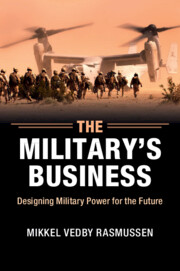4 - The counterinsurgency business model
Published online by Cambridge University Press: 05 March 2015
Summary
On 25 March 2008, the Iraqi government launched an offensive in Basra in order to regain control of the city, which the British occupying forces in southern Iraq had largely left in the hands of the local Shia militia. In Baghdad, the Americans had named the Shia neighbourhood of 2.4 million people after the Shia cleric Al-Sadr, and Al-Sadr was not about to let the attack in the south go unnoticed. He abruptly ended a ceasefire and his gunmen overran government checkpoints around Sadr City. At the same time, Shia fighters intensified their rocket and mortar attacks on the Green Zone, thereby directly challenging the authority of the government and coalition forces positioned there. The hard-won stability in Baghdad was in danger. In March 2007, 81 US service personnel had died in Baghdad, 39 in March 2008. In March 2007, 2,762 Iraqi civilians had died, 810 in March 2008. These improved figures hardly rendered Baghdad a new tourist destination but did represent a serious success for the ‘surge’ of US troops into Baghdad in the spring of 2007. By creating a more secure environment, the US military hoped to provide the basis for reconciliation between the warring Iraqi factions, thereby creating the conditions for an eventual US withdrawal. On 25 March, Al-Sadr threatened to nullify the US successes towards creating stability and bring down the Iraqi government. The US Army had little choice but to intervene.
Colonel John Hort of the 3rd Brigade Combat Team, 4th Infantry Division, was entrusted with taking back Sadr City. The army constructed a wall south of Sadr City to prevent Shia gunmen from filtering into the rest of Baghdad. As one US Army officer observed, Colonel Hort and his men did what any Roman legion would have done: they constructed fortifications around a besieged enemy, thus provoking him to storm their battlements instead of them having to storm his.
- Type
- Chapter
- Information
- The Military's BusinessDesigning Military Power for the Future, pp. 75 - 109Publisher: Cambridge University PressPrint publication year: 2015



